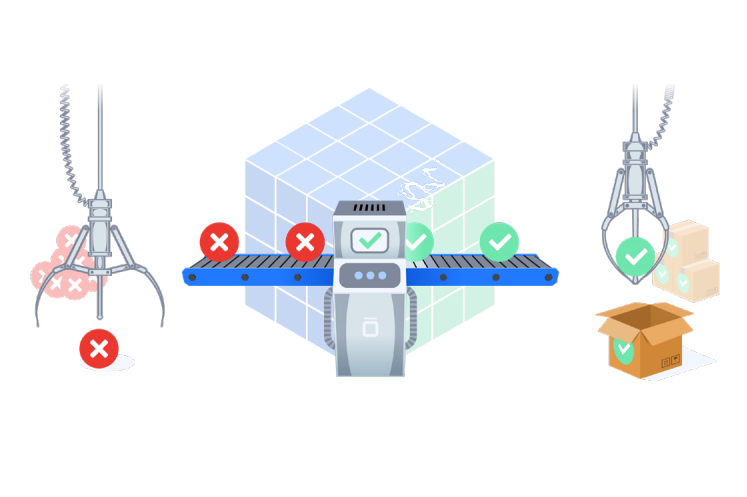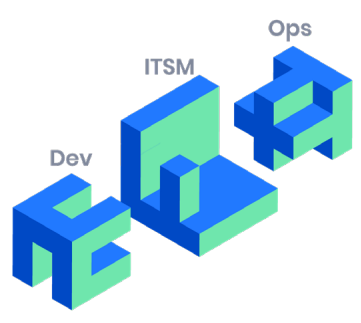TECHNOLOGY INTEGRATIONS
& PARTNERSHIPS
- Atlassian
- AWS
- Appfire
- Tempo
- Carahsoft
- ...and more!
More organizations than ever are embracing digital transformation. According to the KPMG 2020 U.S. CEO Outlook, 76% of survey respondents indicate that the COVID-19 pandemic has accelerated the digitization of operations and creation of next-generation operating models by a matter of months to years. IT, long at the center of digital transformation, and already facing ever-increasing complexity and business demands, is now under undue pressure to meet the moment.

As more organizations embrace digital transformation, many ITSM teams are seeing a significant increase in the need for their services, particularly in three key areas. First, the pursuit of business agility—the ability for a business to thrive in the face of uncertainty and disruption—is creating an increased demand for IT teams to implement and manage modern software systems across the organization. Second, the adoption of more modern operational and development practices like Agile and DevOps is creating demand for new, more integrated technology platforms that break down silos between ITSM, development, and operations teams. Third, rising consumer expectations around more personalized, informed, and responsive service is behind the need for modern systems that support these interactions, while minimizing the lift on ITSM teams.
As a result, ITSM teams are seeking to modernize their own service desk technology platforms to help them meet the demand.

One of the most significant reasons organizations are embracing digital transformation is the need for greater business agility—the ability to respond in a resilient manner to rapidly changing market conditions, business needs, and consumer expectations. While this was true prior to the COVID-19 pandemic, this universal disruption has accelerated the trend. In fact, in their 2021 Business Agility Report, the Business Agility Institute found that more than 87% of organizations reported increases in business agility throughout the COVID disruption. As organizations make strategic investments to achieve greater business agility, a large part of their focus is on technology, a key, foundational function in supporting overall digital transformation.
As part of this transition, IT teams are recognizing the need for more dynamic infrastructure to support dynamic business needs, strategically focus human capital, and better manage costs. Increasingly, they are moving the operation of applications from within their own walls to the cloud. In fact, Gartner predicts 80% of all enterprise workloads will shift to the Cloud by 2025.
Investments in cloud infrastructure are only part of the equation. Given the need to rapidly respond to business changes, deliver products and services faster and with fewer issues, collaborate cross-functionally, respond more efficiently and effectively to outages, and support more engaging customer experiences, IT and support teams are seeking more modern technology solutions that increase transparency, make it easier to share information, and remove friction from internal processes and external interactions.
The Agile Manifesto was released in 2001, and over the course of the more than 20 years since then, it has become a widely accepted standard practice. Agile continues to see rapid adoption and expansion. According to the 15th Annual State of Agile Report, agile adoption by development teams increased from 37% in 2020 to 86% in 2021. Further, the trend toward enterprise-wide agile adoption— meaning the expansion of agile practices beyond development teams and into the business at large—is also gaining traction. The same report indicates that more than half—52 percent—of responding companies’ teams, including those outside of development, had adopted agile.
The term DevOps, a culturally driven set of practices designed to support close collaboration between development and operations teams in order to deliver better-quality software at a faster pace, was coined in 2009. Like agile, in the intervening years, it has seen widespread growth and adoption. In fact, the Puppet 2021 State of DevOps Report finds that “83 percent of IT decision makers report their organizations are implementing DevOps practices to unlock higher business value through better quality software, faster delivery times, more secure systems and the codification of principles.”
While agile and DevOps are two distinct practices, they are highly compatible. Many companies adopt both, and the impact they have on ITSM teams is similar. Both rely heavily on dynamic, often real-time, feedback loops that incorporate input regarding issues with software and business systems. The service desk is often the first place issues come to light and the source of rich information that needs to be fed into that loop. However, older, siloed technology that lacks integration and visibility between DevOps and ITSM tools and processes inhibits collaboration between the two functions and makes it difficult for DevOps teams to access ITSM data. A modern, integrated technology platform across development, operations, ITSM, and often the business at large are critical to the widespread, rapid adoption of both agile and DevOps.

The easy, personalized experiences consumers have in their personal lives are setting new expectations for how people interact with technology in the workplace. Both external and internal customers expect on-demand access to information and data, regular, personalized status updates, and fast, efficient problem resolution. Further, as the world has rapidly shifted to remote work, companies have been forced to find new ways for teams to share information, and for individuals to collaborate, that do not rely on in-person interactions. Consequently, IT teams are forced to rethink how they deliver, operate, and support services for both internal and external customers, and this often means modernizing their own ITSM software.
The ability to search for any information quickly at any time and on any device means that today’s enterprise customers have higher expectations around self-service for their business-related questions and concerns. They want to be able to do a quick search of a wiki or knowledge base to find the information they need, instead of submitting a ticket and waiting for a response. Service desk staff benefit from this approach as well—it limits the number of tickets submitted, so the service desk team can focus on more complex issues where a more advanced skillset is required.
Further, customers today are seeking increased visibility and greater personalization throughout each interaction. Whether they call in or log on to submit a ticket, they want to see and track the progress of that ticket in real time, in much the same way that they can track an Uber, Lyft, or delivery. They also want to be able to put a face and a name to their issues—to know who is responsible for resolving them—and they expect regular updates from that person. For the IT service desk, this increased visibility and personalization drive accountability, which ultimately drives better response times and improved customer satisfaction.
In developing Jira Service Management, Atlassian focused on supporting three core areas of functionality: helping teams deliver customer value fast without adding significant cost of complexity, making work more visible and transparent across teams to support cross-functional decision making and issue resolution, and streamlining and speeding the flow of information between teams, with a particular focus on ITSM and DevOps teams.
For an increasing number of companies, Jira Service Management is helping them meet the demands inherent in digital transformation, while reducing the burden on IT teams.
Jira Service Management helps teams across the enterprise work together in these key areas: request, incident, problem, change, asset, configuration, and knowledge management.
For more information about ITSM trends and best practices, collaboration between IT and DevOps teams, and Atlassian’s Jira Service Management, contact Isos Technology. We’re ready to help you achieve your service management and business goals!
Looking for additional Jira Service Management information and resources? Read all about JSM!